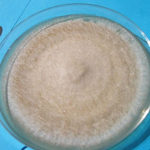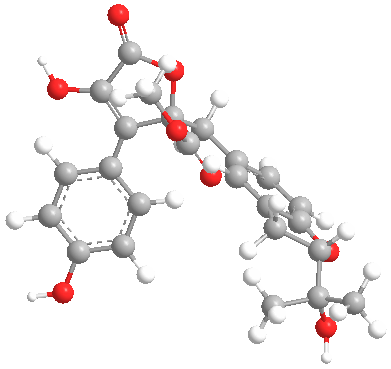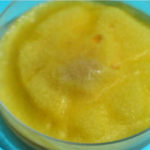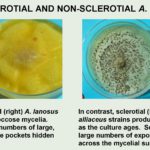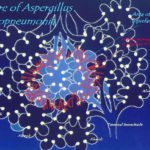Date: 26 November 2013
Secondary metabolites, 3D structure: Trivial name – Butyrolactone III 1,2-dichloroethane
Copyright: n/a
Notes:
Species: A. terreusSystematic name: 2-Furancarboxylic acid, 2-[[(2R)-2,3-dihydro-2-(1-hydroxy-1-methylethyl)-5-benzofuranyl]methyl]-2,5-dihydro-4-hydroxy-3-(4-hydroxyphenyl)-5-oxo-, methyl ester, (2R)-, compd. with 1,2-dichloroethane (1:1)Molecular formulae: C24H24O8.C2H4Cl2Molecular weight: Chemical abstracts number: 271587-59-8Selected references: Rao, K. V.; Sadhukhan, A. K.; Veerender, M.; Ravikumar, V.; Mohan, E. V. S.; Dhanvantri, S. D.; Sitaramkumar, M.; Babu, J. Moses; Vyas, K.; Reddy, G. Om (CORPORATE SOURCE Dr. Reddy’s Research Foundation, Hyderabad 500 050, India). SOURCE Chem. Pharm. Bul
Images library
-
Title
Legend
-
Sclerotial strains produce bright yellow, floccose mycelia. Sclerotial strains produce small numbers of large, fused sclerotial bodies in discrete pockets hidden within the mycelium.
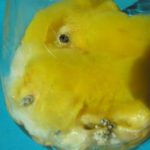
-
Aspergillus alliaceus. No branching was observed in A. alliaceus conidiophores. Sclerotial strains typically produce large numbers of exposed, uniformly-shaped sclerotia across the mycelial surface.

-
Aspergillus alliaceus – Sclerotial. A. alliaceus strains produce flat, pale mycelia that darken as the culture ages.Sclerotial strains typically produce large numbers of exposed, uniformly-shaped sclerotia across the mycelial surface.

-
A. alliaceus strains produce flat, pale mycelia that darken as the culture ages.Sclerotial strains typically produce large numbers of exposed, uniformly-shaped sclerotia across the mycelial surface.
